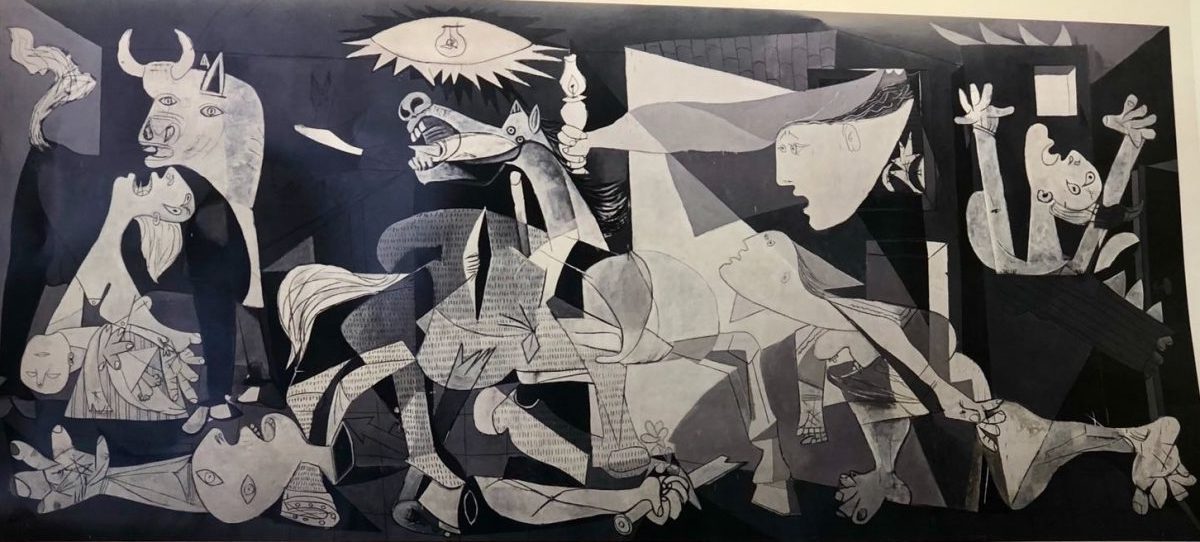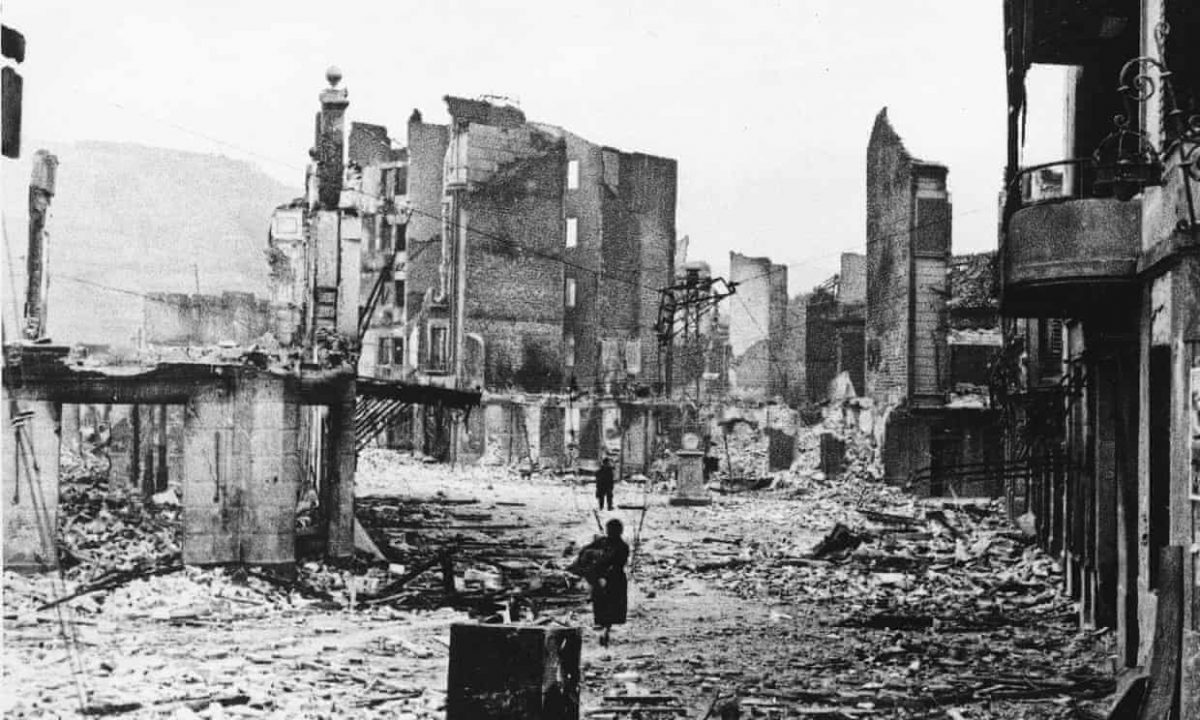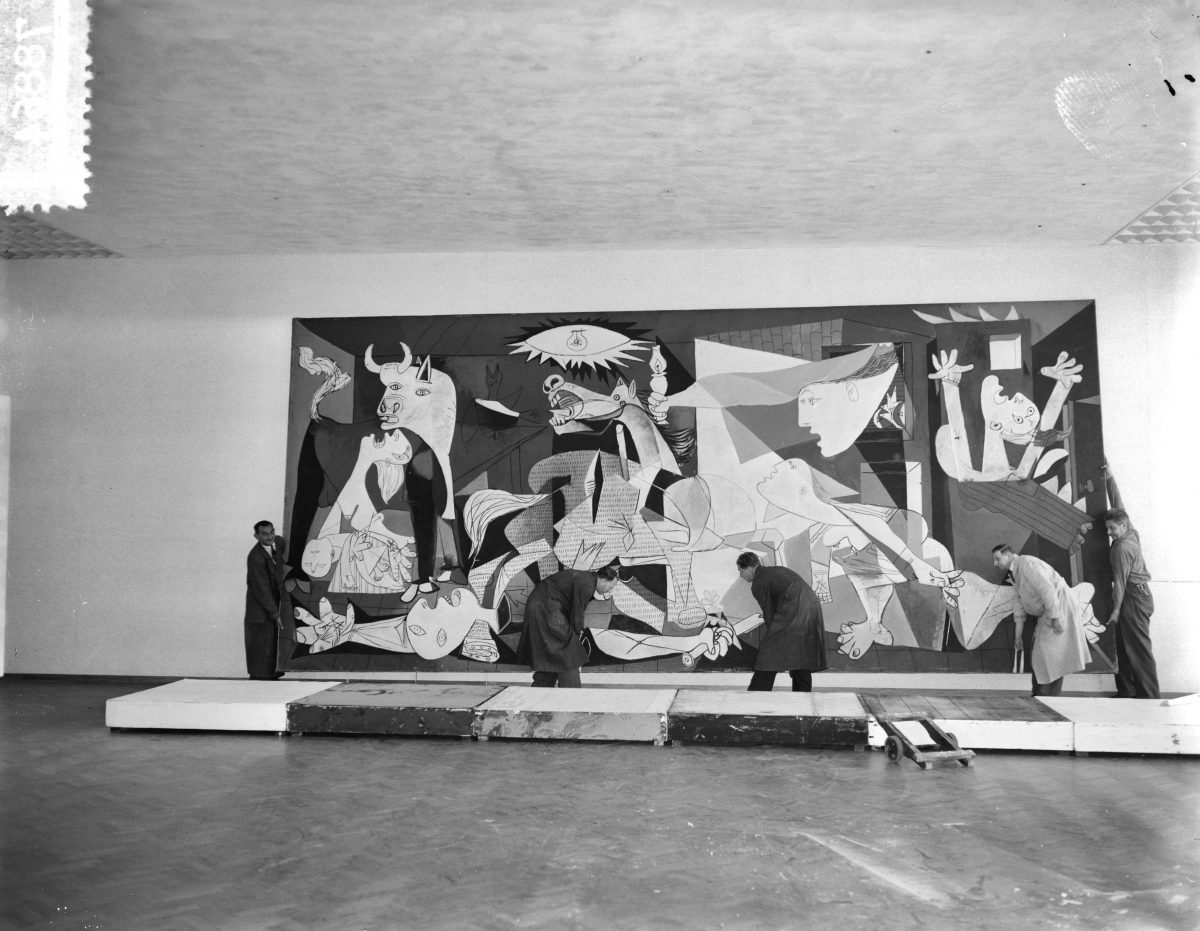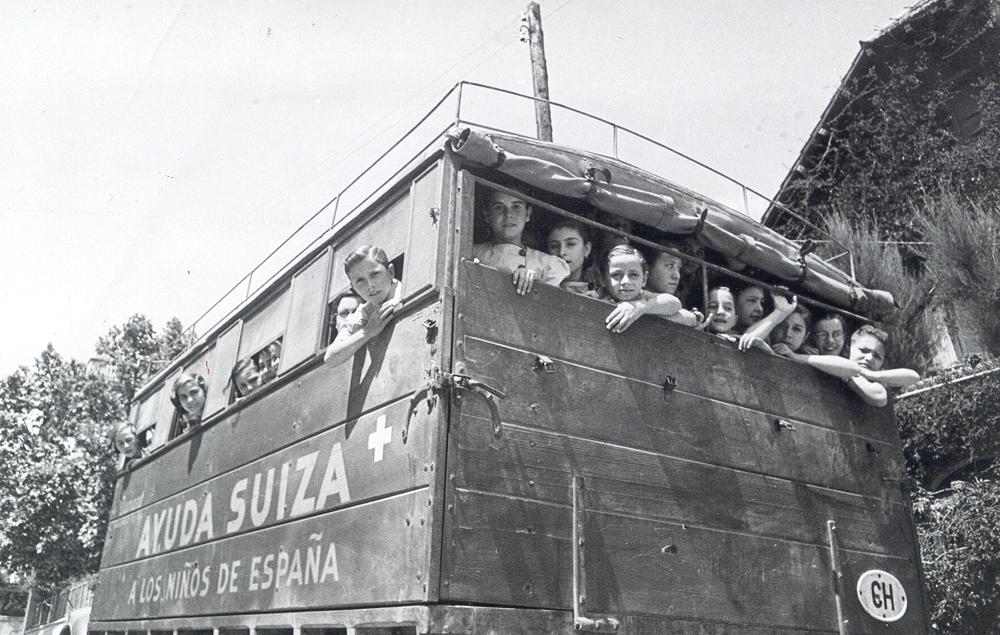
In the Second World War, Spanish painter Pablo Picasso (25 October 1881 – 8 April 1973) remained in Paris while the Germans occupied the city. Constantly under surveillance by the Gestapo on account of what they saw as his “degenerate art” and his Jewish friends, one afternoon a Nazi officer forced his way inside the artist’s apartment. During the search, he pointed to a photograph of Picasso’s painting Guernica. “Did you do that?” the German asked Picasso. “No,” he replied, “You did.”

Guernica after the bombs
Could art become a weapon? The stupidity of war continues – and the past invades the present – but art can jar us of thinking about only ourselves. And so Guernica, the painting Picasso completed in June 1937 at his Paris home in response to the bombing by Nazi Germany and fascist Italy on behalf of the fascist side in the Spanish Civil War of the Basque village from which the work would take its name.
The painting raised awareness of the atrocity when it was showcased at the 1937 World’s Fair in Paris, where Nazi Germany had a large stall. It’s arguably the most celebrated anti-war image of the 20th century.

Guernica on display in Amsterdam, 11 July 1956 by Behrens, Herbert / Anefo
The weeping mother and her baby; the fallen warrior with his stigmata; the woman howling in terror; the dead baby; the bull to show us that this horror was alive in Spain; tongues replaced by swords in screams of agony. Picasso is giving us something in his huge painting. Painted in reportage-style grey, black, and white, the painting is 3.49 meters (11 ft 5 in) tall and 7.76 meters (25 ft 6 in) across. It’s a massive piece of public art.
The fascists said the victims of Guernica (the Basque name is Gernika) had done it to themselves. But the witness statements and Picasso’s painting told another story. Lies kill. Truth hurts. And Picasso’s art was searing, emotive truth-telling.

Children preparing for evacuation from Spain during the Spanish Civil War between 1936 and 1939.
But first there were the words of George Steer, a British journalist whose report for The Times of the deliberate carpet bombing of civilians on 26 April 1937 was relayed by French newspaper in l’Humanité. Picasso saw the report. Four days later he began his work.
“At 2am today when I visited the town the whole of it was a horrible sight, flaming from end to end. The reflection of the flames could be seen in the clouds of smoke above the mountains from 10 miles away. Throughout the night houses were falling until the streets became long heaps of red impenetrable debris…
“The object of the bombardment was seemingly the demoralisation of the civil population and the destruction of the cradle of the Basque race. Every fact bears out this appreciation, beginning with the day when the deed was done…
“The whole town of 7,000 inhabitants, plus 3,000 refugees, was slowly and systematically pounded to pieces. Over a radius of five miles round a detail of the raiders’ technique was to bomb separate caserios, or farmhouses. In the night these burned like little candles in the hills. All the villages around were bombed with the same intensity as the town itself, and at Mugica, a little group of houses at the head of the Guernica inlet, the population was machine-gunned for 15 minutes…
“The rhythm of this bombing of an open town was, therefore, a logical one: first, hand grenades and heavy bombs to stampede the population, then machine-gunning to drive them below, next heavy and incendiary bombs to wreck the houses and burn them on top of their victims…”

Spanish Civil War, 1937. – SCI-International Archives
President Aguirre issued the following statement in this morning’s Basque Press:
“The German airmen in the service of the Spanish rebels, have bombarded Guernica, burning the historic town which is held in such veneration by all Basques. They have sought to wound us in the most sensitive of our patriotic sentiments, once more making it entirely clear what Euzkadis may expect of those who do not hesitate to destroy us down to the very sanctuary which records the centuries of our liberty and our democracy.
“Before this outrage all we Basques must react with violence, swearing from the bottom of our hearts to defend the principles’ of our people with unheard of stubbornness and heroism if the case requires it. We cannot hide the gravity of the moment; but victory can never be won by the invader if, raising our spirits to heights of strength and determination, we steel ourselves to his defeat.
“The enemy has advanced in. many parts elsewhere to be driven out of them afterwards. I do not hesitate to affirm that here the same thing will happen. May to-day’s outrage be one spur more to do it with all speed.”
Before the bombing of Guernica, the British government had a policy of non-intervention in the Spanish Civil War. Stanley Baldwin, the prime minister, reportedly told refugees from Spain to forget heading to the UK as “the climate would not suit”. them.
Some children were eventually allowed in to escape the butchery. That was then. And now… As the writer Kurt Vonnegut put it, “and so it goes…”
Lead Image: Guernica by Pablo Picasso, Creative Commons.
Would you like to support Flashbak?
Please consider making a donation to our site. We don't want to rely on ads to bring you the best of visual culture. You can also support us by signing up to our Mailing List. And you can also follow us on Facebook, Instagram and Twitter. For great art and culture delivered to your door, visit our shop.



